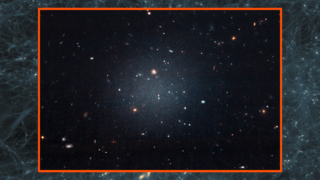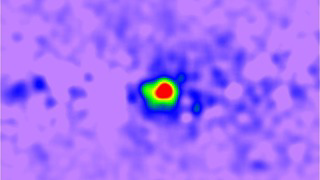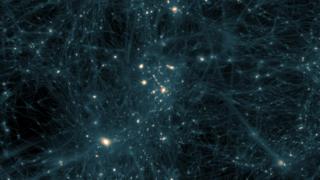Universe
ID: 12317
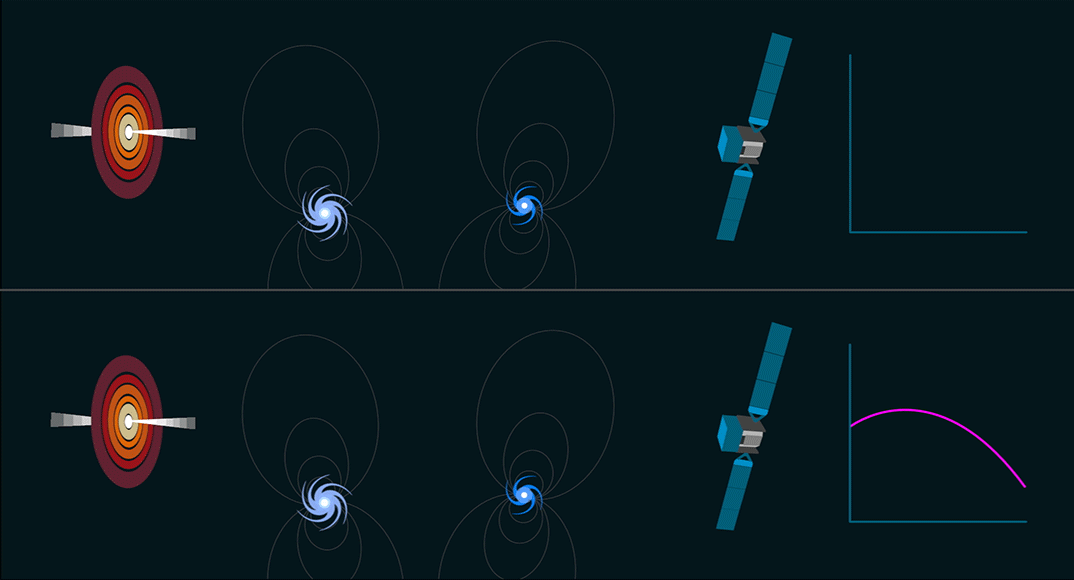
Dark matter, the mysterious substance that constitutes most of the material universe, remains as elusive as ever. Although experiments on the ground and in space have yet to find a trace of dark matter, the results are helping scientists rule out some of the many theoretical possibilities. Three studies published earlier this year, using six or more years of data from NASA's Fermi Gamma-ray Space Telescope, have extended the mission's dark matter hunt using some novel approaches.
Dark matter neither emits nor absorbs light, primarily interacts with the rest of the universe through gravity, yet accounts for about 80 percent of the matter in the universe. Astronomers see its effects throughout the cosmos -- in the rotation of galaxies, in the distortion of light passing through galaxy clusters, and in simulations of the early universe, which require the presence of dark matter to form galaxies at all.
Among the new studies, the most exotic scenario investigated was the possibility that dark matter might consist of hypothetical particles called axions or other particles with similar properties. An intriguing aspect of axion-like particles is their ability to convert into gamma rays and back again when they interact with strong magnetic fields. These conversions would leave behind characteristic traces, like gaps or steps, in the spectrum of a bright gamma-ray source. But a study to search for these effects in gamma rays from NGC 1275, the central galaxy of the Perseus galaxy cluster, excluded a small range of axion-like particles that could have comprised about 4 percent of dark matter.
Another broad class of dark matter candidates are called Weakly Interacting Massive Particles (WIMPs). In some versions, colliding WIMPs either mutually annihilate or produce an intermediate, quickly decaying particle. Both scenarios result in gamma rays that can be detected by the LAT.
In another study, scientists determined that the distribution of dark matter in the Small Magellanic Cloud (SMC), the second-largest of the small satellite galaxies orbiting our Milky Way galaxy, was enough to produce detectable signals for two WIMP types. But no signal from dark matter annihilation was found to be statistically significant.
Lastly, another team used more than 6.5 years of LAT data to analyze the background glow of gamma rays seen all over the sky. Fermi has shown that much of this light arises from unresolved gamma-ray sources, particularly galaxies called blazars, which are powered by material falling toward gigantic black holes. But some models predict that EGB gamma rays could arise from distant interactions of dark matter particles, such as the annihilation or decay of WIMPs. Instead, the new study shows that blazars and other discrete sources can account for nearly all of this emission.
Although these latest studies have come up empty-handed, the quest to find dark matter continues both in space and in ground-based experiments.


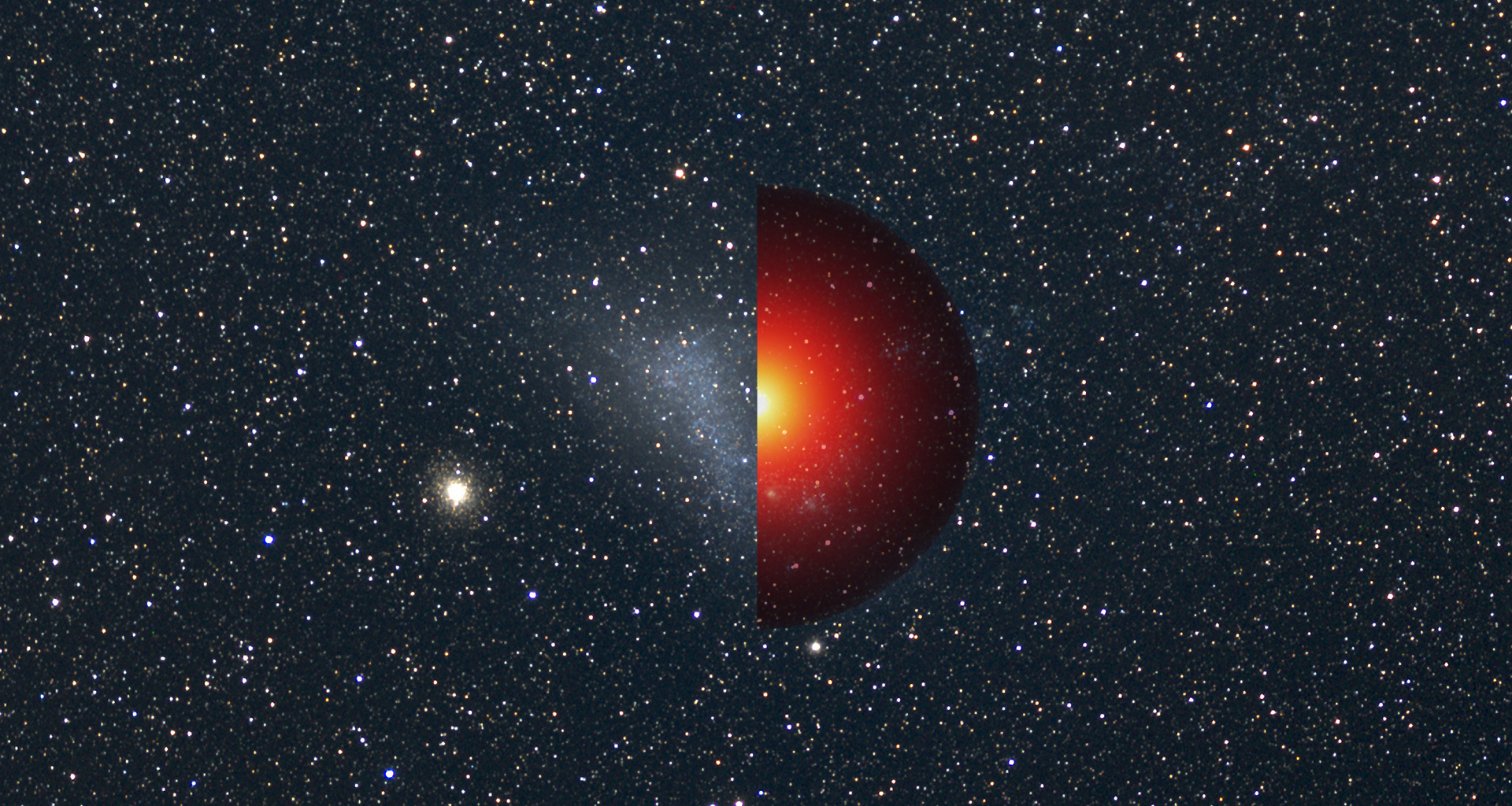
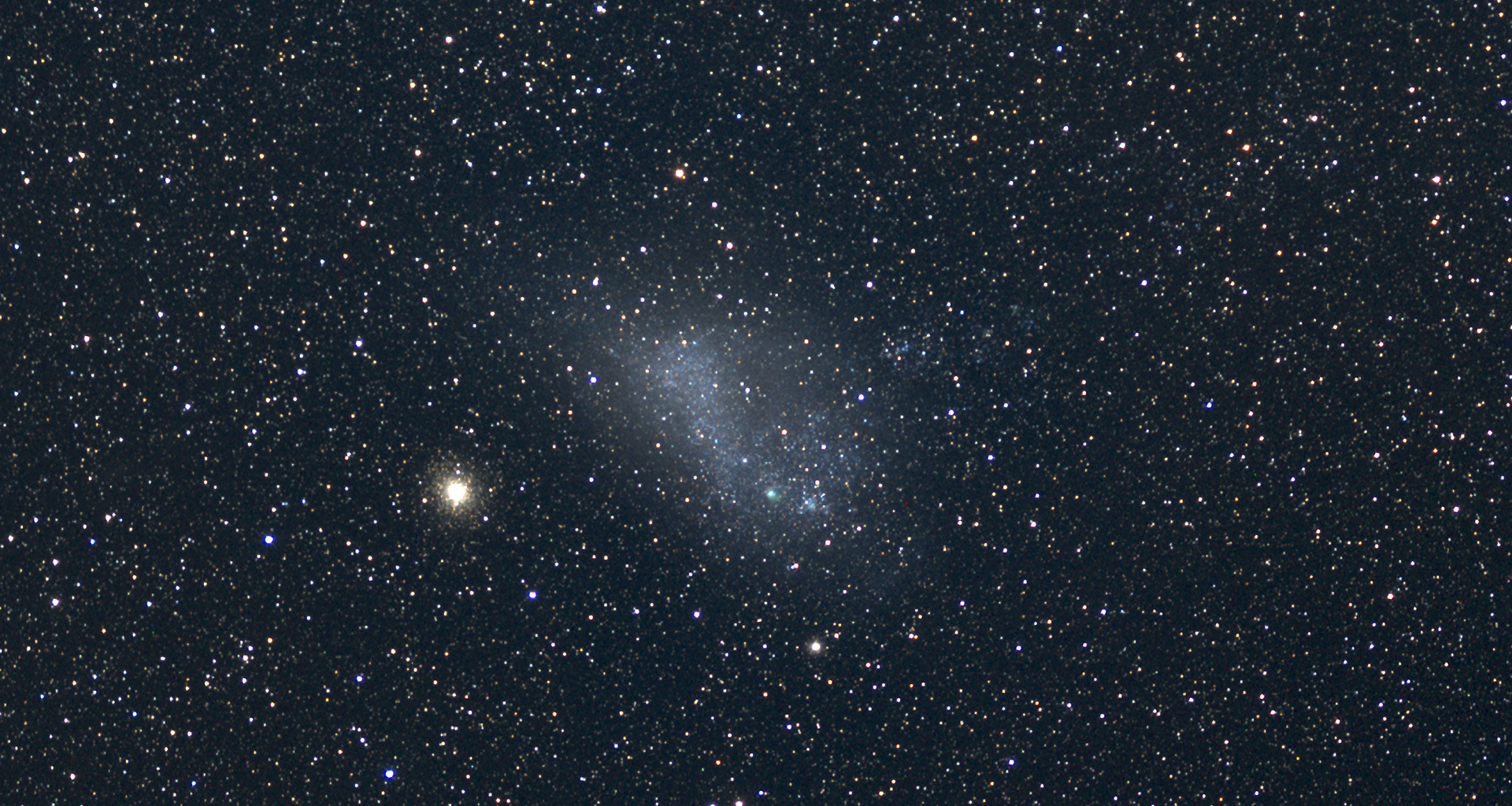
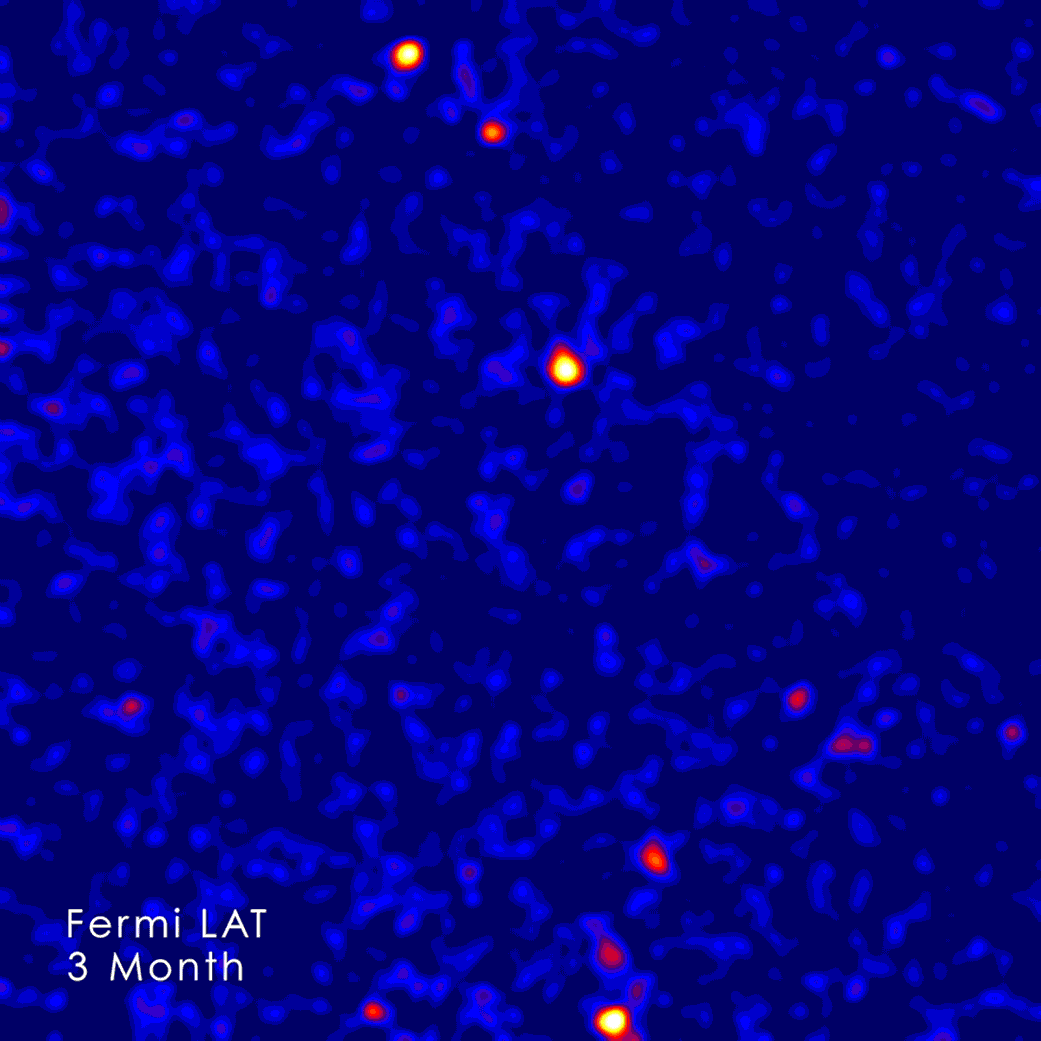
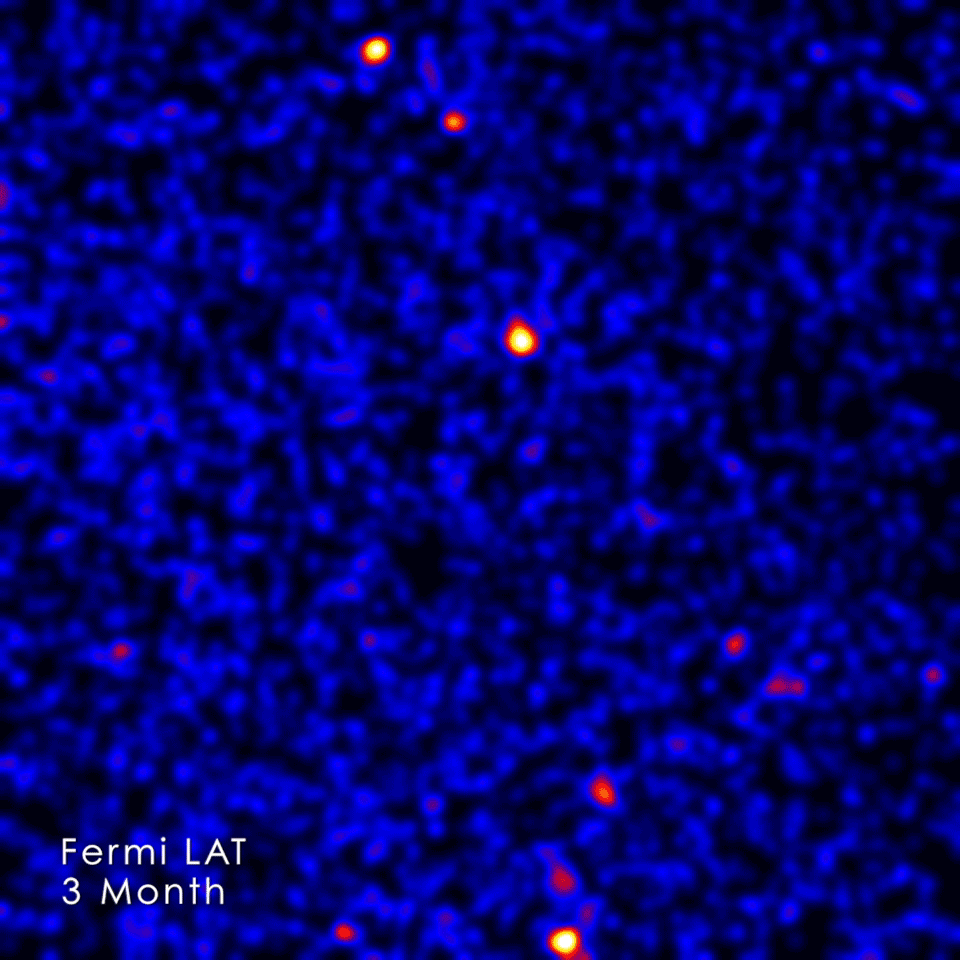
NASA's Fermi Mission Broadens its Dark Matter Search

Dark matter neither emits nor absorbs light, primarily interacts with the rest of the universe through gravity, yet accounts for about 80 percent of the matter in the universe. Astronomers see its effects throughout the cosmos -- in the rotation of galaxies, in the distortion of light passing through galaxy clusters, and in simulations of the early universe, which require the presence of dark matter to form galaxies at all.
Among the new studies, the most exotic scenario investigated was the possibility that dark matter might consist of hypothetical particles called axions or other particles with similar properties. An intriguing aspect of axion-like particles is their ability to convert into gamma rays and back again when they interact with strong magnetic fields. These conversions would leave behind characteristic traces, like gaps or steps, in the spectrum of a bright gamma-ray source. But a study to search for these effects in gamma rays from NGC 1275, the central galaxy of the Perseus galaxy cluster, excluded a small range of axion-like particles that could have comprised about 4 percent of dark matter.
Another broad class of dark matter candidates are called Weakly Interacting Massive Particles (WIMPs). In some versions, colliding WIMPs either mutually annihilate or produce an intermediate, quickly decaying particle. Both scenarios result in gamma rays that can be detected by the LAT.
In another study, scientists determined that the distribution of dark matter in the Small Magellanic Cloud (SMC), the second-largest of the small satellite galaxies orbiting our Milky Way galaxy, was enough to produce detectable signals for two WIMP types. But no signal from dark matter annihilation was found to be statistically significant.
Lastly, another team used more than 6.5 years of LAT data to analyze the background glow of gamma rays seen all over the sky. Fermi has shown that much of this light arises from unresolved gamma-ray sources, particularly galaxies called blazars, which are powered by material falling toward gigantic black holes. But some models predict that EGB gamma rays could arise from distant interactions of dark matter particles, such as the annihilation or decay of WIMPs. Instead, the new study shows that blazars and other discrete sources can account for nearly all of this emission.
Although these latest studies have come up empty-handed, the quest to find dark matter continues both in space and in ground-based experiments.






Related
For More Information
Credits
Scott Wiessinger (USRA): Technical Support
Aaron E. Lepsch (ADNET Systems, Inc.): Technical Support
Francis Reddy (Syneren Technologies): Lead Science Writer
Francis Reddy (Syneren Technologies): Graphics
Chris Smith (SLAC): Animator
Aaron E. Lepsch (ADNET Systems, Inc.): Technical Support
Francis Reddy (Syneren Technologies): Lead Science Writer
Francis Reddy (Syneren Technologies): Graphics
Chris Smith (SLAC): Animator
Please give credit for this item to:
NASA's Goddard Space Flight Center. However, individual items should be credited as indicated above.
NASA's Goddard Space Flight Center. However, individual items should be credited as indicated above.
Short URL to share this page:
https://svs.gsfc.nasa.gov/12317
Mission:
Fermi Gamma-ray Space Telescope
This item is part of this series:
Astrophysics Stills
Keywords:
SVS >> Galaxy
GCMD >> Earth Science >> Spectral/Engineering >> Gamma Ray
SVS >> Black Hole
SVS >> Astrophysics
SVS >> Universe
SVS >> Space
SVS >> Fermi
SVS >> Blazar
NASA Science >> Universe
GCMD keywords can be found on the Internet with the following citation: Olsen, L.M., G. Major, K. Shein, J. Scialdone, S. Ritz, T. Stevens, M. Morahan, A. Aleman, R. Vogel, S. Leicester, H. Weir, M. Meaux, S. Grebas, C.Solomon, M. Holland, T. Northcutt, R. A. Restrepo, R. Bilodeau, 2013. NASA/Global Change Master Directory (GCMD) Earth Science Keywords. Version 8.0.0.0.0
https://svs.gsfc.nasa.gov/12317
Mission:
Fermi Gamma-ray Space Telescope
This item is part of this series:
Astrophysics Stills
Keywords:
SVS >> Galaxy
GCMD >> Earth Science >> Spectral/Engineering >> Gamma Ray
SVS >> Black Hole
SVS >> Astrophysics
SVS >> Universe
SVS >> Space
SVS >> Fermi
SVS >> Blazar
NASA Science >> Universe
GCMD keywords can be found on the Internet with the following citation: Olsen, L.M., G. Major, K. Shein, J. Scialdone, S. Ritz, T. Stevens, M. Morahan, A. Aleman, R. Vogel, S. Leicester, H. Weir, M. Meaux, S. Grebas, C.Solomon, M. Holland, T. Northcutt, R. A. Restrepo, R. Bilodeau, 2013. NASA/Global Change Master Directory (GCMD) Earth Science Keywords. Version 8.0.0.0.0
